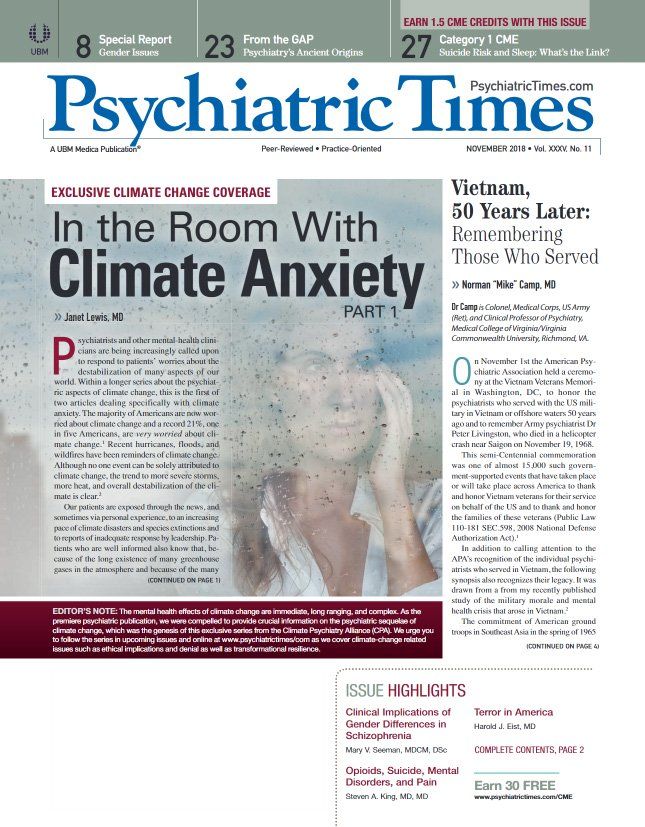Publication
Article
Psychiatric Times
Psychiatry’s Ancient Origins
As it turns out, modern psychiatry reflects some of the values and concepts held by early civilizations.
©AltagraciaArt/Shutterstock

» Kenneth J. Weiss, MD, for the Committee on the Arts & Humanities, Group for the Advancement of Psychiatry
When did psychiatry begin? Was it with the discovery of the unconscious? Or was it the discovery of neurotransmitters? As it turns out, healers have been treating mental disorders for thousands of years. Modern psychiatry reflects some, but not all, the values and concepts held by early civilizations. Ancient Greek, Indian, Chinese, Egyptian, Hebrew, European, Arabic, and other cultures explored dimensions of mental and physical health and disease. In the Group for the Advancement of Psychiatry’s (GAP) 2018 most recent installment in our series of videos on the history of psychiatry, the Committee on Arts & Humanities explores how mental illness was understood from post-stone-age cultures through the Middle Ages.
Early civilizations relied on shamans, sorcerers, magicians, mystics, priests, and other approved healers to treat illnesses. Using rituals, incantations, and offerings, sickness could be prevented or healed. Somatic therapies, not unlike neurosurgery, can be inferred from archeological findings from France (6500 BCE) and China (5000 BCE). For example, skeletal remains of children with marked skull abnormalities and traumas suggest the ways in which humans cared for mentally impaired children 77,000 years ago.1
Some ancient peoples believed diseases occurred due to loss of the soul. Shamans entered into trances or altered states of consciousness, enabling their souls to journey into spirit worlds, sometimes into the underworld.2 During the journey, shamans connected to souls of the dead and to living souls that had strayed or been stolen. Interacting with demons and lost souls without losing their own souls, they brought about cures. The shaman acted as both priest and healer.
In Classical Greece (fifth century BCE), philosophers taught “naturalism,” the belief that laws of nature shape our world, as opposed to gods and demons determining human fate. Alcmaeon, for example, believed the brain, not the heart, was the “organ of thought.”3 He tracked the ascending sensory nerves from the body to the brain, theorizing that mental activity originated in the CNS and that the cause of mental illness resided within the brain. He applied this understanding to classify mental diseases and treatments.
Hippocrates developed a theory of chemical imbalance based on four humors: black bile, yellow bile, phlegm, and blood. Disease resulted from disproportions among the humors. His thinking influenced the practice of medicine for 2000 years.4 Today the term melancholia (too much black bile) is still in use. Hippocrates may have been “wrong” by current scientific thought, but theories of “chemical imbalance” remain.
In India, the ancient textbook on Yoga Sutra describes dynamics leading to health and illness.5 In later centuries, the external causes of mental illness were attributed to patients’ sins committed during current or previous lives. For example, disregarding important deceased persons, superhuman agents, ghosts, deities, and celestial beings could bring about various symptoms, depending on which spirits were offended.
Chinese texts from 3000 year ago mention neuropsychiatric illness, including descriptions of mania and psychosis with or without epilepsy. “Imbalance” was the mechanism of psychosis. Other conditions described include confusion, visual illusions, intoxication, stress, and even malingering. Psychological theories about stages of human development can be traced to the time of Confucius, about 2500 years ago.6
During Europe’s Middle Ages, the focus of theories about mental illness shifted back from physiology to spirituality. As Christianity spread, ideas about sin dominated, and the “psychotherapists” of the era were priests rather than physicians. The notion of demons in the Old Testament continued into the writings of the New Testament. Demonic possession remained a basic assumption. Christian physicians embraced some of the old beliefs of the Greeks and Romans, however, the natural therapy of the Greeks was lost as treatment turned to astrology, alchemy, theology, magic rites, and exorcism.
Preoccupation with witches raged throughout the seventeenth century. Tens of thousands of suspected witches, mostly women, were killed. Those accused of witchcraft included individuals who exhibited aberrant behaviors that today would be considered examples of mental illness, while some had no symptoms.7
The interplay between supernatural and natural thinking can be seen across ancient cultures. Mental health practices continued to progress and regress throughout the centuries, eventually including the idea of dedicated institutions for the care of the mentally ill. Tensions among culture, religion, and science will continue to shape concepts about the treatment of individuals with mental illnesses. Studying psychiatry’s origins and evolution gives us perspective on our own beliefs and practices.
To view the video on the Ancient Origins of Psychiatry, go to https://www.youtube.com/watch?v=u072SnfVMXU
Disclosures:
Group for the Advancement of Psychiatry Committee on Art & Humanities: David Sasso, MD, MPH (Committee Chair), Assistant Clinical Professor in the Child Study Center, Yale University School of Medicine; Anish Ranjan Dube, MD, MPH, Volunteer Clinical Faculty, University of California, Irvine; Donald Fidler, MD, FRCP-I, Professor Emeritus, West Virginia University; Alan M. Gruenberg, MD, Professor, Department of Psychiatry and Human Behavior, Sidney Kimmel Medical College at Thomas Jefferson University; Andrew Lustbader, MD, Associate Clinical Professor in the Child Study Center, Yale University School of Medicine; Allan Peterkin, MD, Professor of Psychiatry and Family Medicine, University of Toronto; Anna Skorzewska, MA, MD, Staff Psychiatrist University Health Network, Assistant Professor, Faculty of Medicine, University of Toronto; Chris Snowdy, MD, Associate Program Director, USC Psychiatry Residency and Child Psychiatry Fellowship; John Tamerin, MD, Greenwich, CT; Kenneth J. Weiss, MD, Robert L. Sadoff Clinical Professor of Psychiatry, Perelman School of Medicine, University of Pennsylvania; Alexander Westphal, MD, Assistant Professor of Psychiatry and in the Child Study Center, Yale University School of Medicine.
References:
1. Gracia A, Arsuaga J, Martinez I, et al. Craniosynostosis in the Middle Pleistocene human Cranium 14 from the Sima de los Huesos, Atapuerca, Spain. PNAS. 2009;106:6573-6578.
2. Eliade M. Shamanism: Archaic Techniques of Ecstasy. Princeton, NJ: Princeton University Press; 1964.
3. Millon T, Grossman S, Meagher SE. Masters of the Mind: Exploring the Story of Mental Illness from Ancient Times to the New Millennium. New York: John Wiley & Sons, Inc; 2004.
4. Yapijakis C. Hippocrates of Kos, the father of clinical medicine, and Asclepiades of Bithynia, the father of molecular medicine. In Vivo. 2009;23:507-514.
5. Pradhan BK. Yoga and Mindfulness Based Cognitive Therapy (Y-MBCT): A Clinical Guide. Switzerland: Springer Int Pub; 2014.
6. Higgins LT, Zheng M. An introduction to Chinese psychology: its historical roots until the present day. J Psychol. 2002;136:225-239.
7. Levack B. The Witch-Hunt in Early Modern Europe, 2nd ed. Boston, MA: Pearson Education Ltd; 1995.







